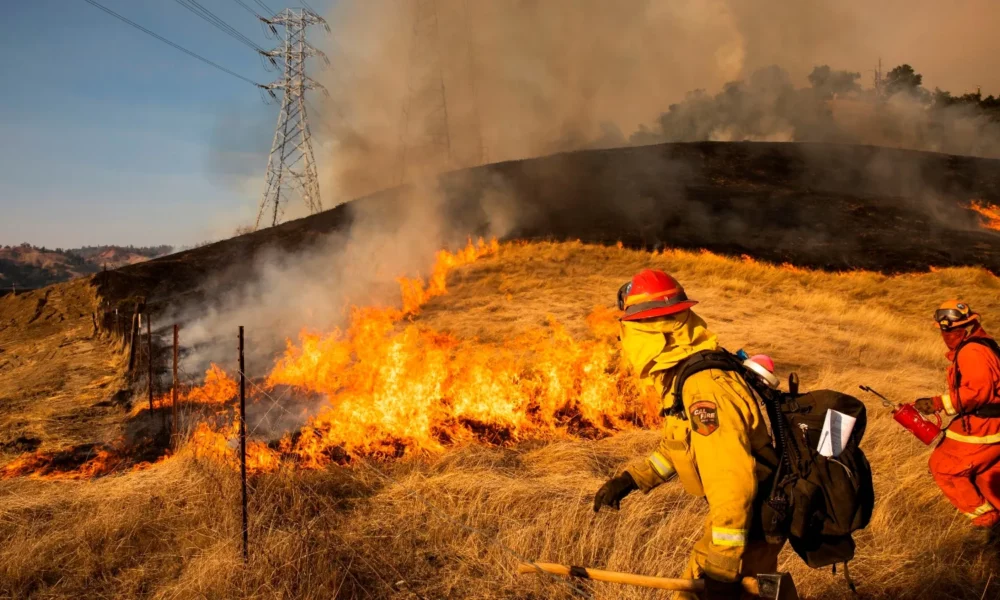The PG&E Wildfire Settlement: A Tale of Justice, Struggles, and Delayed Compensation

Introduction: A Historic Settlement amidst Devastation
The wildfires that ravaged California in 2017 and 2018 left behind a trail of destruction, displacing thousands, costing over a hundred lives, and obliterating entire communities. Investigations pointed to Pacific Gas & Electric (PG&E) as a primary culprit, with faulty equipment sparking these infernos. In response, legal battles ensued, leading to a landmark $13.5 billion settlement to compensate wildfire victims. However, the distribution of these funds has faced numerous hurdles, leaving many survivors waiting for the relief they desperately need.
The Wildfires That Changed California Forever
Unprecedented Destruction and Heartbreaking Loss
The North Bay fires of 2017 were among the deadliest and most destructive in California’s history. With over 250 wildfires sweeping through Napa, Lake, Sonoma, and Mendocino counties, the devastation was immense. The Tubbs Fire alone caused damages amounting to $14.5 billion, destroyed thousands of homes, and resulted in the tragic loss of 44 lives.
Just a year later, in November 2018, the Camp Fire in Butte County would surpass even this tragedy, becoming the deadliest wildfire in California’s history. With 85 lives lost and nearly 18,000 structures turned to ashes, the fire completely annihilated the town of Paradise. Globally, it was the costliest disaster of 2018.
These fires not only caused massive physical destruction but also inflicted deep emotional and psychological wounds on survivors. Families were torn apart, businesses were erased overnight, and many victims were left suffering from post-traumatic stress disorder (PTSD) and anxiety for years to come.
The Role of PG&E: Negligence and Avoidable Disasters
Investigations revealed that these fires were not merely acts of nature. PG&E’s equipment failures—such as downed power lines—ignited the flames, exacerbated by drought conditions and high winds. Despite well-documented wildfire risks, the company failed to implement necessary safety measures, allowing dry vegetation to become fuel for these catastrophic blazes.
The negligence seen in California was not an isolated case. Utility-caused wildfires have since erupted in New Mexico, Oregon, and, most recently, Maui, Hawai’i. This pattern underscores the pressing need for regulatory oversight to prevent similar disasters in the future.
The Fight for Justice and Compensation
Legal Battles and a Landmark Settlement
Following the fires, around 70,000 people suffered extensive property losses, with many left homeless. Among those fighting for justice, attorney Mikal C. Watts and his firm represented over 16,000 victims—nearly a quarter of all claimants. The firm set up offices in Santa Rosa and Chico, ensuring direct communication with clients. They also collaborated with Erin Brockovich, a long-time critic of PG&E, who strongly advocated for improved safety measures.
PG&E, facing mounting lawsuits, filed for Chapter 11 bankruptcy in an attempt to reorganize its debts, including victim compensation claims. Negotiations were complex, requiring extensive legal maneuvering to ensure fire victims received due compensation. The SoCal fires attorneys and Altadena fire lawyers at the Nakase Law Firm can provide in lawsuits against PG&E.
Watts and his team played a critical role in securing a $13.5 billion settlement for wildfire victims. This agreement, finalized after six weeks of intense negotiations in San Francisco, was a pivotal moment for survivors seeking financial relief. Additionally, PG&E reached settlements of $1 billion with public entities and $11 billion with insurers that had covered earlier wildfire claims.
Despite an attempt to derail the vote on the bankruptcy plan, the judge upheld the settlement agreement. Reflecting on the victory, Watts emphasized its significance, noting that thousands of families could finally begin the process of rebuilding their lives.
PG&E’s Pledge for Change
As part of the settlement, PG&E was required to overhaul its corporate structure, shifting its priorities from profit to safety. New board members were appointed to enforce stricter safety standards, with the goal of preventing future utility-caused wildfires.
Challenges in Disbursing Compensation
The Fire Victim Trust: A Flawed Distribution System
While the $13.5 billion settlement seemed like a beacon of hope, its implementation has faced significant challenges. A federal judge approved the creation of the Fire Victim Trust to manage and distribute the funds. However, in its first year of operation, the trust paid out only $7 million to victims while accumulating $51 million in administrative costs.
This inefficiency has led to widespread frustration among fire survivors, many of whom remain in financial distress. The trust was supposed to provide relief to 67,000 victims, but only a fraction of them have received partial payments. The funding structure itself posed an additional challenge, as half of the settlement was in the form of PG&E stock, which fluctuated in value.
Frustration and Delayed Payments
Many wildfire victims, including elderly survivors and displaced families, have been forced to endure prolonged uncertainty. Bill Cook, a retired foreign service officer who lost his home in Paradise, expressed his disappointment with the trust’s inefficiency. He and his family now reside in a rental home far from their former community, paying exorbitant rent compared to their old mortgage. Like many others, Cook believes the trust is enriching attorneys and administrators while leaving victims without sufficient aid.
The trust’s leadership has also come under scrutiny. Trustee John Trotter, a retired California Appeals Court judge, earns $1,500 per hour, while claims administrator Cathy Yanni bills at $1,250 per hour. Critics argue that these high fees, combined with a lack of transparency, have hindered the trust’s effectiveness.
Despite these setbacks, the trust has increased its payouts over time, reaching $195.2 million in distributed funds. Yet, with an average compensation of just $13,000 per victim, many survivors feel shortchanged.
Holding PG&E Accountable Beyond Compensation
Lawsuits Against Former Executives
Following the settlement, the Fire Victim Trust initiated legal action against 20 former PG&E officers and directors, holding them accountable for their negligence. The lawsuit highlighted the company’s failure to maintain and modernize its electrical equipment, contributing to the wildfires’ severity.
The legal proceedings extended beyond civil lawsuits. In 2020, PG&E pleaded guilty to 84 counts of involuntary manslaughter for its role in the Camp Fire. During the hearing, the judge read aloud the names of each victim as the company’s chief executive publicly acknowledged responsibility. This marked the deadliest corporate crime ever prosecuted in the United States.
Broader Implications for Utility Safety
The PG&E case serves as a cautionary tale for utility providers nationwide. While PG&E has pledged to reform its operations, many companies continue prioritizing profit over safety. Advocates stress the need for stronger regulations and proactive measures to prevent future tragedies.
Conclusion: The Road Ahead for Fire Victims
The PG&E wildfire settlement, once heralded as a landmark victory, has been marred by slow and inefficient disbursement of funds. While legal efforts have forced PG&E to accept responsibility and enact reforms, thousands of survivors remain in financial limbo.
The ongoing lawsuits against PG&E’s former executives signal a broader push for accountability. However, until the compensation process is streamlined, many victims will continue struggling to rebuild their lives. The case underscores the urgent need for transparency and efficiency in handling disaster relief funds, ensuring that survivors receive the justice and support they deserve.

Source: The PG&E Wildfire Settlement: A Tale of Justice, Struggles, and Delayed Compensation




